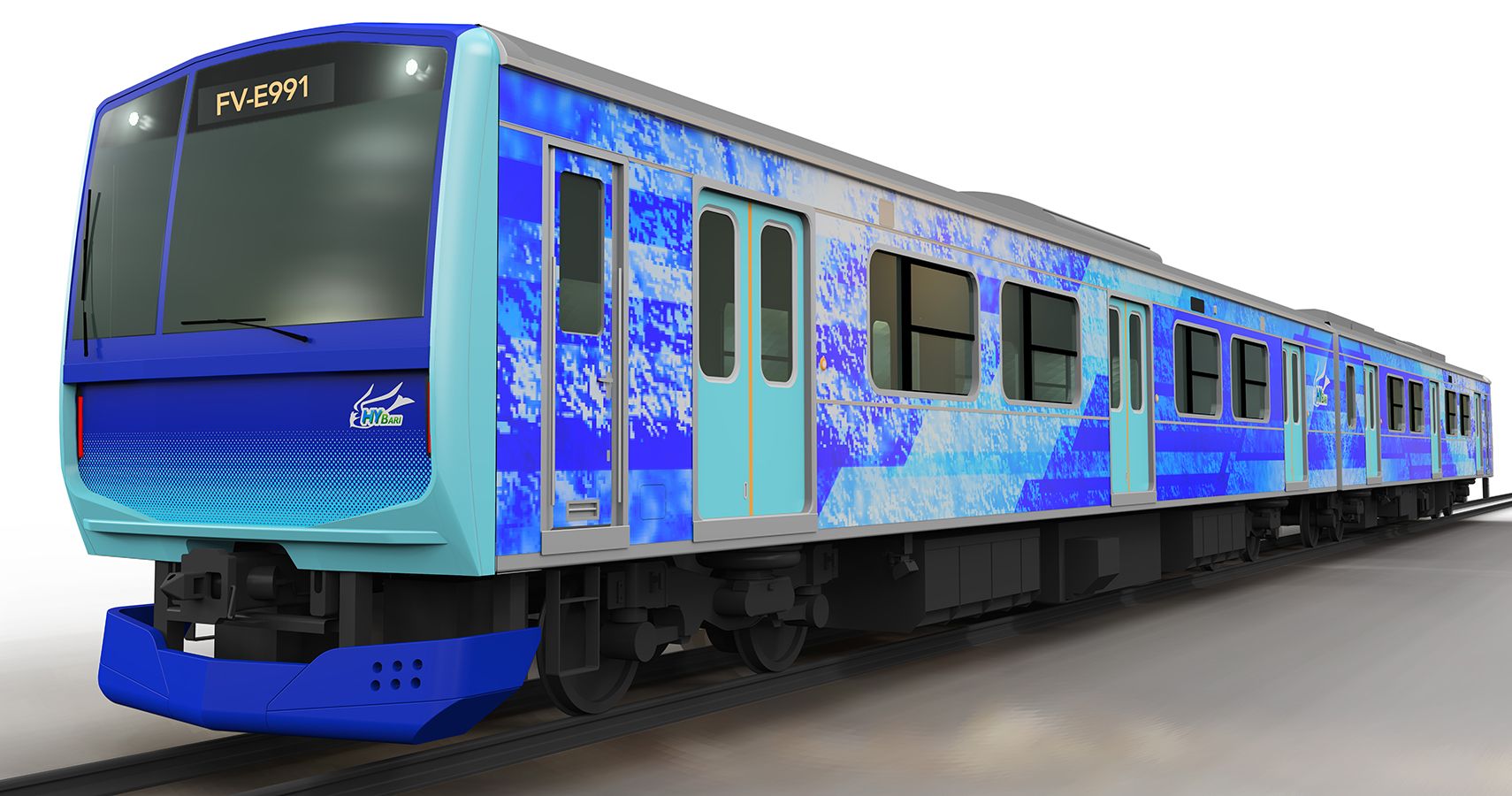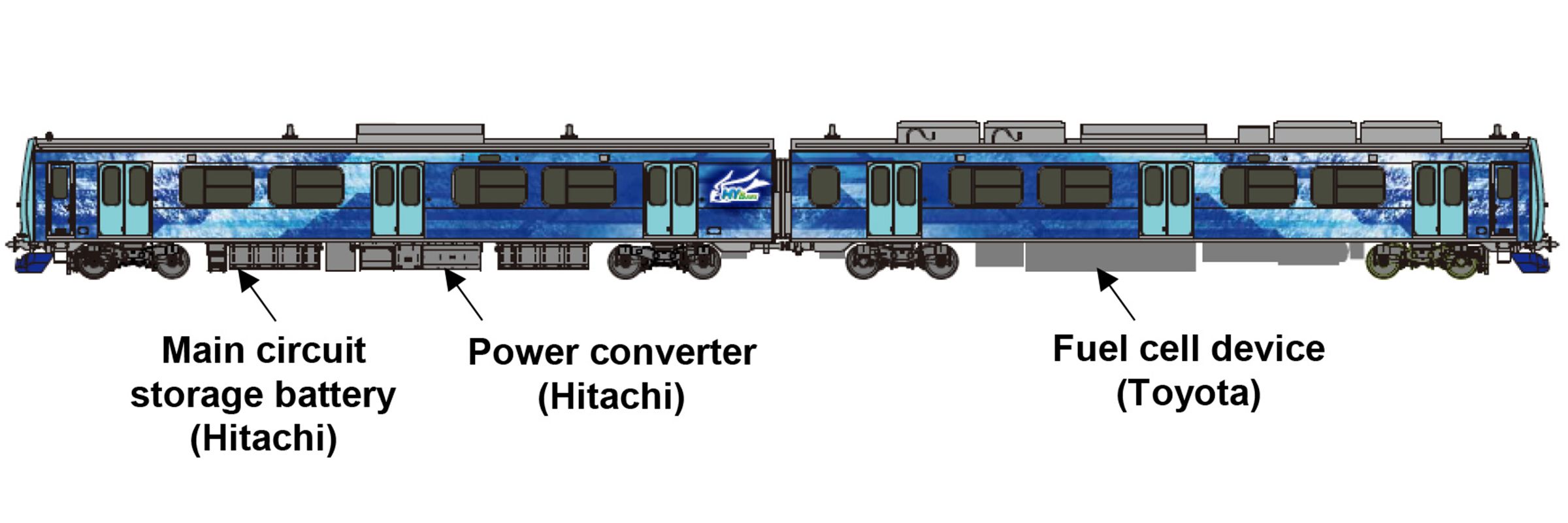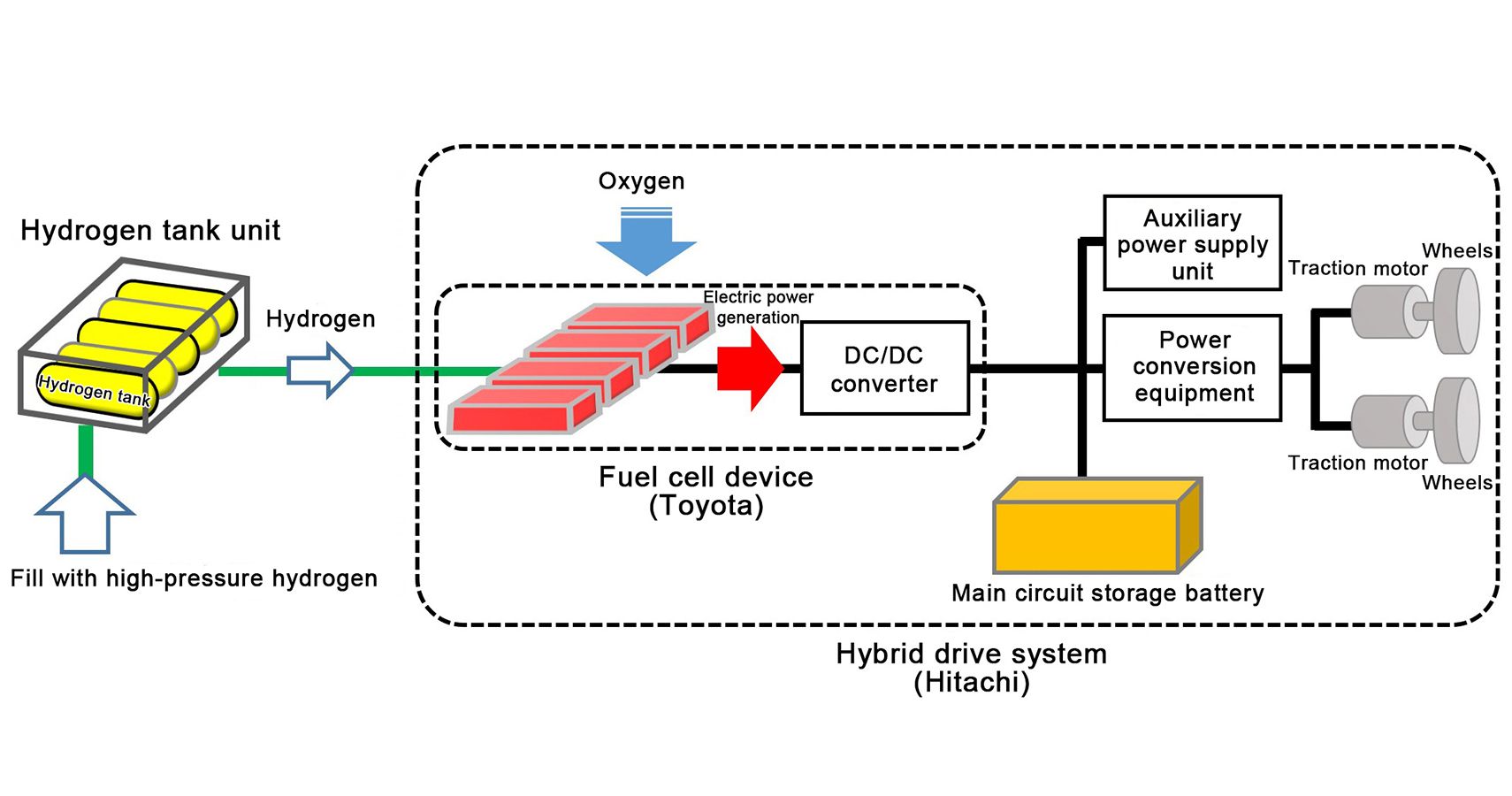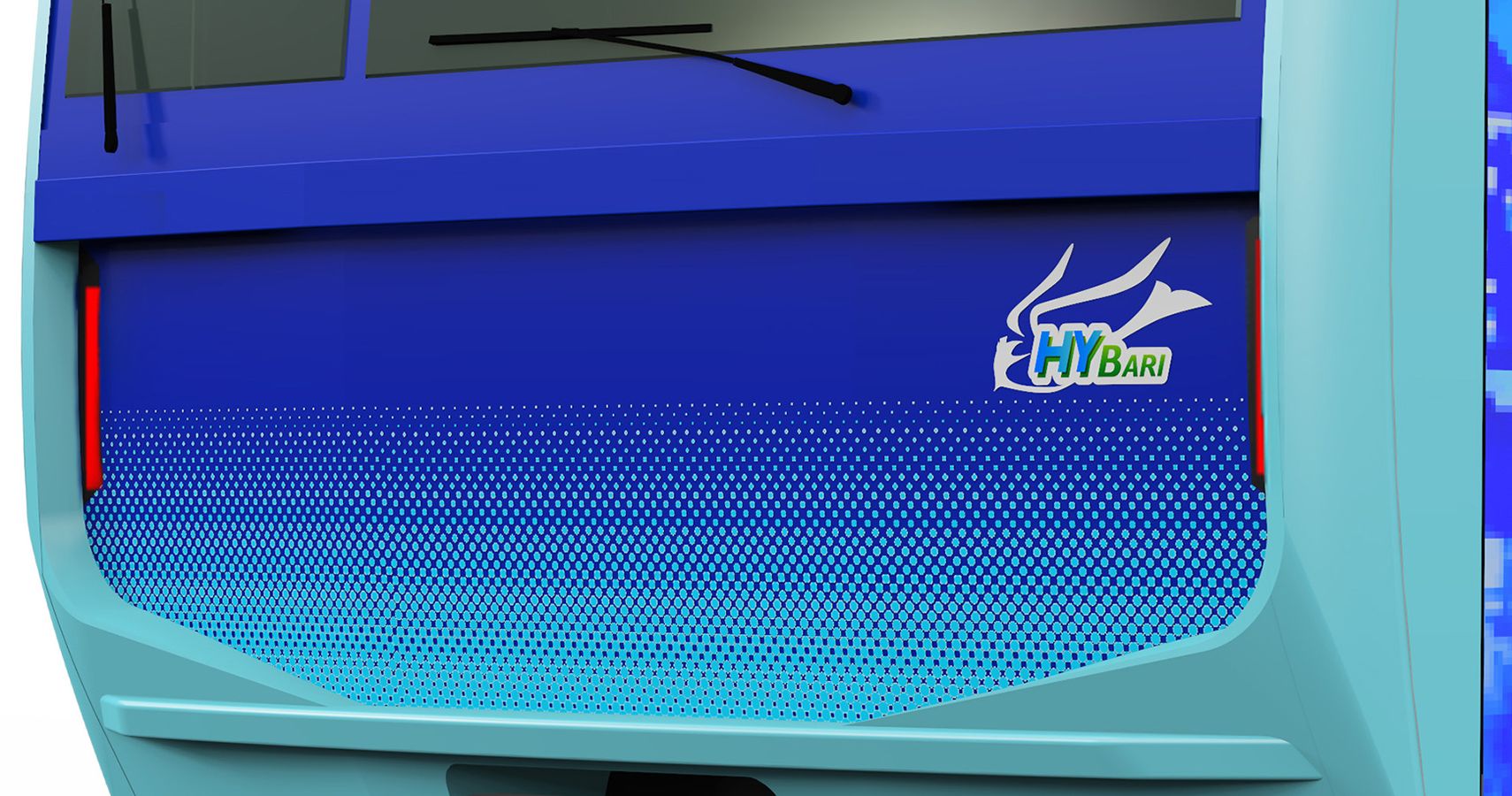As one of the largest carmakers in the world, Toyota has found itself looking beyond conventional engines. In fact, it has invested into hydrogen fuel cell technology, launching the Mirai FCEV in the process. Armed with this expertise, Toyota is collaborating with East Japan Railway (JR East) and Hitachi to develop fuel-cell power hybrid test trains dubbed HYBARI.
Hybrid Advanced Rail Vehicle
HYBARI stands for HYdrogen-HYBrid Advanced Rail vehicle for Innovation. It's actually an advanced hybrid railway test vehicle (or train) powered by fuel cells and a main circuit storage battery. It's aimed at achieving the high-power output control needed to drive railway vehicles, which are larger than their road-going counterparts.
In this collaboration, Toyota, Hitachi, and JR East will leverage their technologies to create the HYBARI. JR East will contribute its railway vehicle design and manufacturing technologies while Hitachi will chip its railway hybrid drive system that it developed with JR East. Toyota, meanwhile, will take care of fuel-cell related technologies.
First HYBARI Model Is Already Planned
The first HYBARI model will be the FV-E991. A two-car configuration, this train has a top speed of 62 mph (100 km/h) with an acceleration rate of 1.4 mi/h/s (2.3 km/h/s). It's powered by four 95-kW traction motors and two inverters. HYBARI FV-E991 will make use of four 60-kW solid polymer electrolytes as a fuel cell device and two 120-kWh lithium-ion batteries. HYBARI has a maximum range of around 87 miles (140 km).
Here's how HYBARI works: Hydrogen is stored in four units of 21-liter tanks (five tanks for each unit) and then fed to the fuel cell device, where it undergoes a chemical reaction with oxygen to generate electricity.
The generated electricity not only powers the traction motors but also recharges the main circuit storage battery. The main circuit storage battery – which also stores electricity converted from regenerative braking – likewise supplies power to the traction motors.
From Cars To Trains
There are quite a number of reasons why fuel cell vehicles are better than pure EVs. It's about time that fuel cell technologies were used in other modes of transpation other than cars and trucks. Trains carry more people than cars, so it's a good place to start.
Source: Toyota




